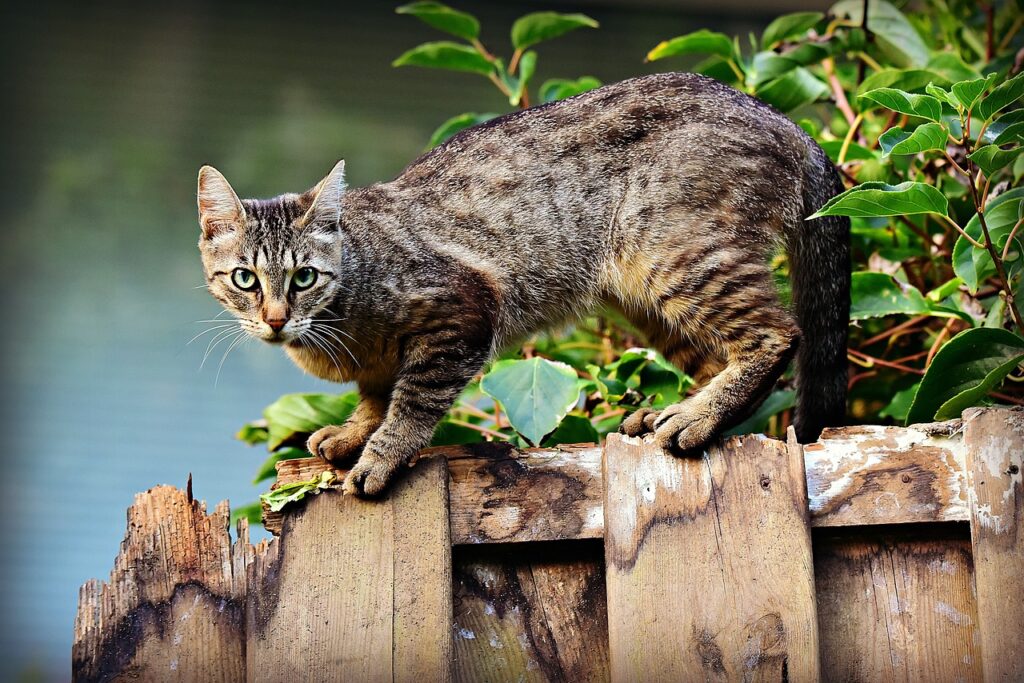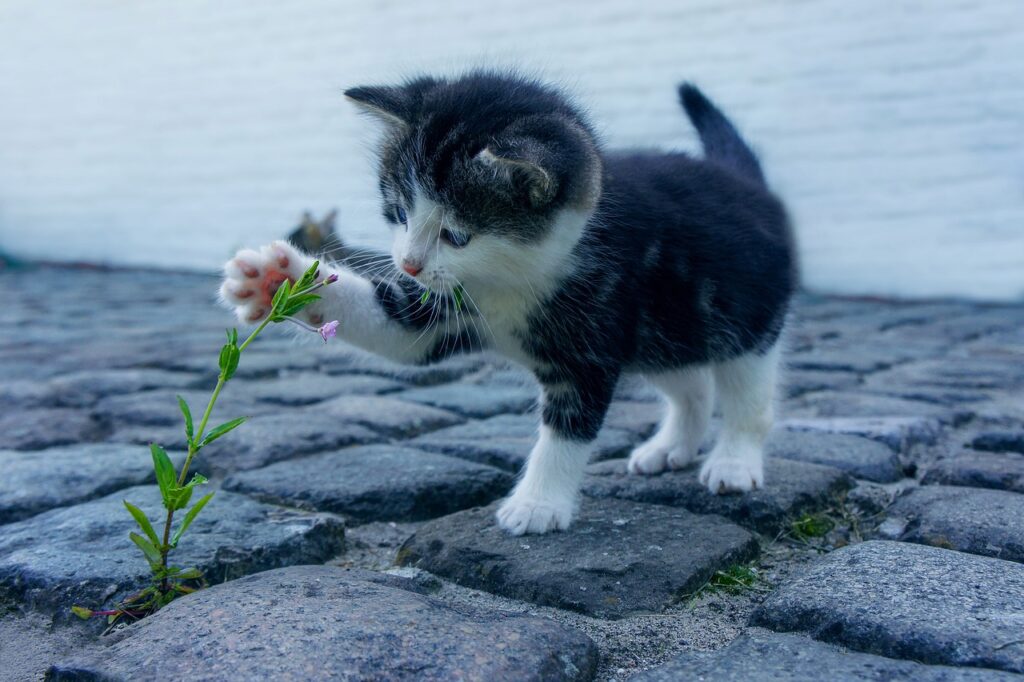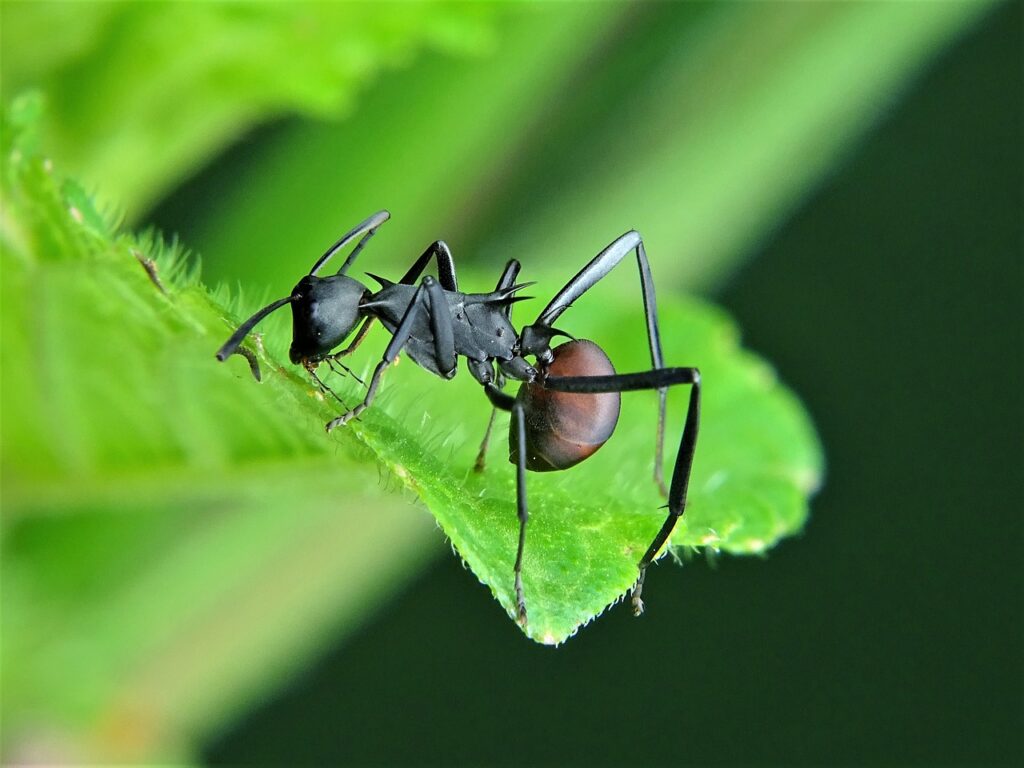Using plats to deter cats is kind, natural and humane. If you’re a cat lover, it’s understandable why you might welcome some feline visitors to your garden. Unfortunately, cats can also wreak havoc on your carefully nurtured plants, digging, chewing, and perhaps even using your vegetable patches as a litter box. Worse still, outdoor cats can be a threat to native wildlife, including birds, insects, and small mammals. If you want to protect your garden from the unwanted attention of cats, planting cat-deterring plants is a wise move. Let’s discuss some plants cats hate, how to plant them, and how they work to discourage feline intruders.
As an Amazon and ebay Affiliate we may earn a commission off any purchases made through our links. This won’t affect the price you pay.
The Best Plants To Deter Cats
Cats are quite finicky in their plant preferences, so not all plants work equally well for this purpose. Here’s a list of ten cat deterrent plants:
1. Lavender: Cats hate the scent of lavender, making it one of the preferred cat repellent plants.
2. Coleus Canina: Also known as “scaredy cat plant,” this species contains chemicals that mimic the scent of dog urine, which can add to a great cat repellent garden.

3. Pennyroyal: This herb has a strong minty aroma that repels cats and can also be used to make a natural insect repellent.
4. Rue: Rue has a bitter taste and a pungent odor that cats avoid. However, it’s worth noting that this plant can be poisonous if ingested in large quantities, so be sure to handle it carefully.
5. Lemon Balm: Lemon balm has a citrus-like scent that is pleasant to humans but repulsive to cats.
6. Rosemary: Rosemary is a versatile herb that adds flavor to many dishes and also happens to be a cat deterrent. Its potent aroma can repel cats and other pests.

7. Geraniums: Geraniums have fragrant flowers and leaves that cats find unpleasant and often avoid.
8. Garlic: Garlic is another versatile plant that not only adds flavor to food but repels cats and other pests. You can plant garlic bulbs in the ground or in pots placed strategically around your garden.
9. Curry Plant: Curry plant’s strong scent is too intense for most cats, so it is an effective deterrent. Also known as Curry Herb.
**Do your research on water and soil requirements for the above.
Using Spikey Plants to Deter Cats
1. Agave – Agave plants are known for their large spiky leaves, which makes it an excellent option for deterring cats. They are striking architectural plants that are low maintenance and require little watering. Agave plants do well in containers and thrive in full sun.
2. Euphorbia – There are many varieties of Euphorbia that work well as spikey plants. This genus contains over 2,000 species ranging from tiny annuals to large trees, so there’s something for everyone. The Medusa’s Head species is an excellent deterrent since it has numerous spiky appendages reaching up like serpents, making it unappealing to cats. Euphorbia Candelabrum and Euphorbia Ingens also have thorns, and they are impervious to drought, which makes them perfect for hot and arid climates.
3. Yucca – Yucca is an evergreen plant with long, slender leaves, and large spiny tips. It’s a terrific option for deterring cats, as the spikes can be up to two inches long, making it difficult for cats to navigate them, especially in the presence of several plants arranged in a cluster. Some species of yucca, including the Spanish bayonet (Yucca gloriosa) and the Joshua tree (Yucca brevifolia), have exceptionally sharp and rigid leaves that can grow up to four feet long.

4. Holly – Holly shrubs are well known for their spiky leaves and are a classic option for deterring cats. This plant is related to the boxwood and can grow in a range of environments but prefers well-drained soils in partial shade. Holly is a slow-growing shrub that can take a few years to establish, but once it’s established, it can grow well over six feet tall.
5. Cactus – There are hundreds of varieties of cacti, but all of them have one thing in common: they’re spikey! Cacti have tiny, needle-like thorns that can be very sharp (be careful though as they can easily injure cats), making them an ideal option for a cat repellant. Cacti are also drought-tolerant, making them an excellent option for gardens in arid climates. However, it’s important to note that some species of cactus can be toxic to pets if ingested, so it’s crucial to choose a cat-safe variety.
6. Blackthorn – This deciduous shrub is native to Europe and Asia and is well known for its sharp thorns. It grows well in partial shade or full sun and is highly tolerant of both hot and cold temperatures. Its tiny white flowers bloom in late winter, making it an attractive option, especially in colder climates.

7. Pyracantha – Pyracantha is a thorny evergreen shrub that produces clusters of white flowers in the spring, followed by ornamental red, orange or yellow berries in the fall. Pyracantha has some serious spikes, and its sharp thorns can reach up to two inches long. It grows well in full sun or partial shade and can grow to a height of six or seven feet with a width of around four feet.
When choosing spikey plants to deter cats, it is also important to consider the size of your garden, and the potential impact that the plants may have on surrounding spaces. Some plants can grow quite large and may become unmanageable if not correctly pruned. It’s also important to note that spikey plants can create a hazard if they are not located in appropriate areas. For example, placing spikey plants close to walking paths or in areas where children play can be dangerous.
How and Where to Plant These Plants
It’s essential to plant your cat-deterring specimens in the right spots to maximize their effectiveness. Here are some tips on planting:
1. Place the plants near areas where cats typically enter or frequent your garden, such as paths, flower beds, and borders.
Choose strategic locations – To ensure that your plants are effective, it’s important to put them in places where cats are likely to go. For example, if you’re trying to keep cats from digging up your flower beds, you should place the deterrent plants around the perimeter of the bed rather than in the middle of it. Similarly, if you want to keep cats from climbing on a particular fence or wall, plant the deterrent plants near the base of that structure.
Mix up your approach – you may want to try using multiple types of plants to keep cats away. This can make it harder for cats to get accustomed to any one scent or texture, making it more likely that they’ll avoid the whole area.
Pay attention to the season – Some plants may be more effective at different times of the year. For example, wintergreen and lemongrass tend to be most effective during the summer months, while rue and lavender are effective year-round. You may need to adjust your plant choices over time to keep up with seasonal changes. Each plant will have requirements, many will require full sun, well drained soil, and lots of organic matter in the garden beds or containers.
It may take some observation and experimentation but it will be worth it.
2. Consider planting them in containers to make it easier to move them around.
Choose the right container – The type of container you use is important. Cats can be notoriously curious and persistent, so make sure your containers are robust and difficult to knock over. A heavy, ceramic pot or metal container will be less likely to tip over if a cat jumps on it. Plastic pots can work, too, but make sure they are weighted down so they don’t tip over. You may even want to consider using a pot stand or trellis to lift some plants higher off the ground and out of reach of cats.
Create barriers – Containers are an easy way to create physical barriers that cats cannot easily access. For example, if you don’t want cats to urinate in a specific area of your garden, you could simply place a container of prickly plants in the spot to discourage them from getting too close. If you’re trying to keep cats from getting into a specific bed or area, a row of prickly potted plants placed at the edge of the area can be an effective barrier.
Containers offer some advantages for cat repellency because you can move them around as necessary to test out what works best. Choosing the right container in terms of type and size is crucial to ensure it is strong enough to withstand the attention of curious cats. Plant types can also complement each other such as using prickly cacti plants alongside leafy citronella plants can go a long way to keep out both insects and cats.

3. If you are planting herbs, consider using them as companion plants for vegetables and fruits that you want to protect from pests, as many of these herbs also act as natural insect repellents.
When using herbs as companion plants, it is important to carefully plan how you are going to integrate each species into your garden. Different herbs have different growing requirements. Some herbs thrive in sunny areas, while others prefer shaded environments. Before planting herbs together, be sure to research their needs, ensuring that they can coexist together. Also, be sure to check for any potential allergic reactions to the herbs you may have as well as any toxic plants that can be hazardous to your pets.
As mentioned above, plants like rosemary, lavender, rue, pennyroyal, and coleus canina all have strong scents that cats dislike. These plants can also be used as companion plants to repel insects and other pests, such as ticks, fleas, and mosquitoes. When used effectively, herbs can be an easy and cost-effective way to keep cats out of garden areas.
 How These Plants Deter Cats
How These Plants Deter Cats
Most of the cat-deterring plants discussed above work in one of two ways. Some plants, like lavender, lemon balm, and geraniums, have scents that are pleasant to humans but unpleasant to cats. When cats detect these smells, they will typically avoid the area entirely. Other plants, like rue and coleus canina, have bitter or unappealing tastes that cats find unpalatable, so they will avoid eating them.
Some plants, like curry plant and rosemary, have strong fragrances that can also repel other pests, including insects and rodents. In this way, planting these cat-deterring plants can help to protect your garden from a wide range of intruders.
Other Methods
1. Reconsider Your Garden Design:
Creating an unfriendly environment for cats is a proactive way to keep them out of your garden. Opt for a layered design, incorporating hedges, bamboo screening, or dense foliage to create barriers and limit visibility. Cats often avoid gardens that lack open spaces for them to easily navigate and hide in. Additionally, consider integrating pathways through your garden to direct feline traffic away from sensitive areas.
2. Utilize Natural Odor Deterrents:
Cats have a strong sense of smell, which can be used to our advantage. Introduce scents that are displeasing or overpowering to cats, such as citrus peels or coffee grounds strategically sprinkled around the garden. . Be sure to regularly refresh these odor deterrents to ensure their effectiveness.

3. Employ Safe Physical Barriers:
To physically prevent cats from accessing certain areas, consider installing barriers that are safe for both cats and other wildlife. Mesh netting, chicken wire, or fencing materials with narrow openings can be used around specific garden beds or along boundaries to keep cats from entering. Avoid using barbed wire or any sharp materials that may harm cats or other animals.
4. Create Distractions or Cat-Friendly Areas:
Cats may be less likely to wander into your garden if they have alternatives available to them. Set up a designated area within your yard, such as a sandbox with loose soil, where cats can fulfill their natural instinct to dig and scratch. Also, consider installing a bird feeder or providing an outdoor shelter where cats can observe birds or other wildlife, serving as a more attractive alternative to your garden.
5. Use Motion-Activated Devices:
Cats are naturally deterred by unexpected, sudden movements. Install motion-activated sprinklers or noise-emitting devices around your garden to startle cats when they approach. These devices provide a gentle reminder to cats to avoid the area without causing any harm to them.
6. Regular Maintenance and Vigilance:
Consistency is key when deterring cats from your garden. Regularly inspect your garden for signs of feline presence or behavior, such as digging or spraying. Promptly remove any feces and cover disturbed soil to discourage cats from revisiting those areas. Additionally, redirect wandering cats with gentle but firm encouraging gestures, ensuring they understand your garden is off-limits.
Cats are awesome pets, but they can also cause problems in your garden. Planting cat-deterring plants is an excellent way to protect your plants from feline damage while also preventing cats from harming wildlife. Fortunately, there are options and plants that repel cats.
As an Amazon and ebay Affiliate we may earn a commission off any purchases made through our links. This won’t affect the price you pay.

